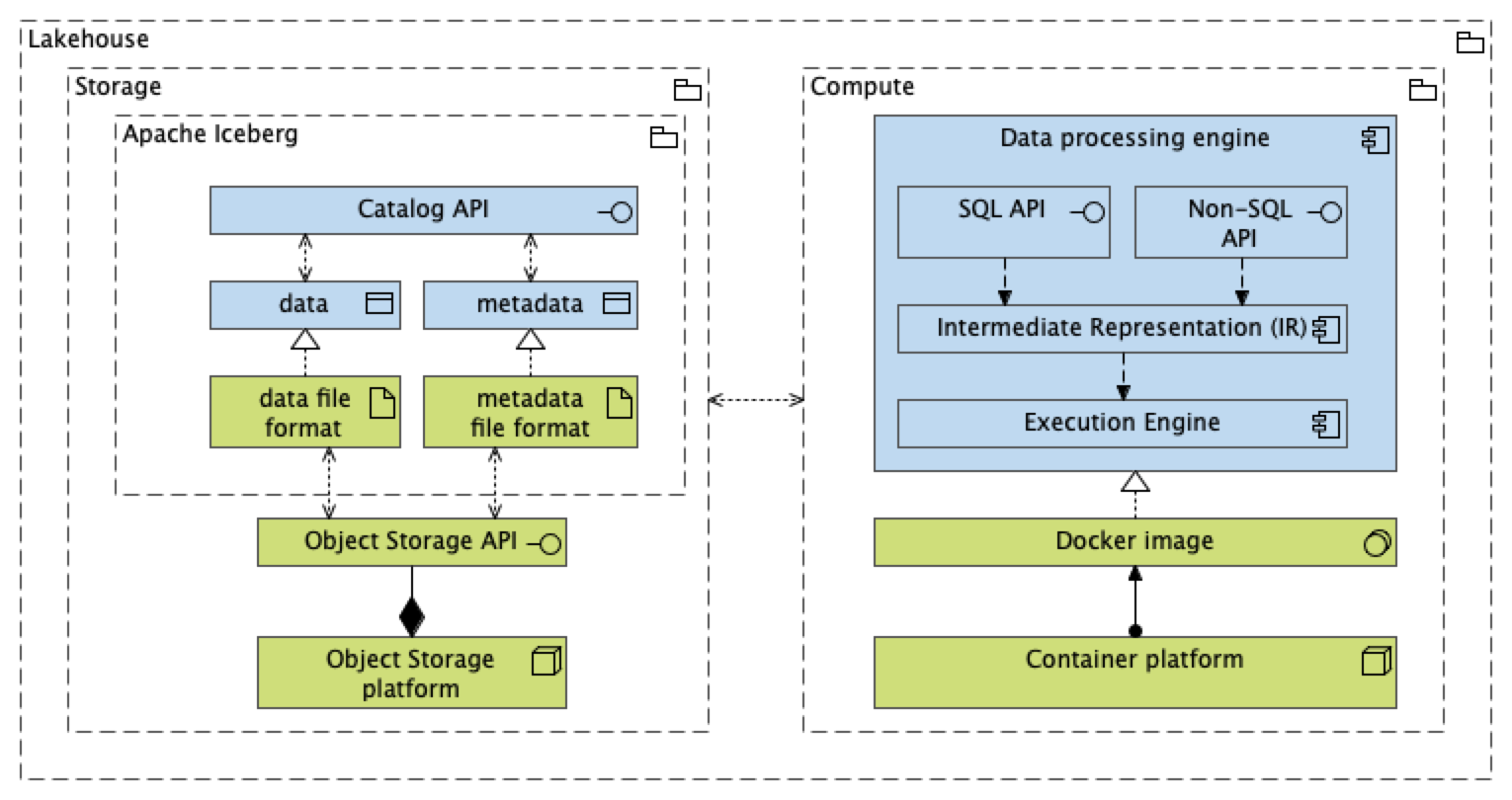Harmonized solution design of data stations
This section provides a detailed, harmonized solution design of data stations and data hubs in federated data systems for secondary use of health data.
We take Klepmann (2017) as our starting point, who states that “Many applications today are data-intensive, as opposed to compute-intensive. Raw CPU power is rarely a limiting factor for these applications—bigger problems are usually the amount of data, the complexity of data, and the speed at which it is changing.”
Generically, we want:
| Reliability | Scalability | Maintainability |
|---|---|---|
| tolerating hardware & software vaults | Measuring load & performance | Operability, simplicity & evolvability |
| human error | Latency percentiles, throughput |
We focus on analytical data systems, with different patterns from transactional data systems.
Detailing the layers of a data station
TO DO: provide detailed layers, and explain how interoperability works across the layers:
- Storage layer (technology): all reference architectures stipulate use of S3-compliant blob storage
- Data and metadata (application): resides in the data station
- We propose to move towards open table formats, that is, Apache Iceberg, whereby storage and compute can be separated
Detailing the data conformity zone
TO DO: explain that
data conformity zone is essentialy a lakehouse pattern
the architecture of a lakehouse has stabilized and converged towards:
- Colum-oriented storage and memory layout: Apache Arrow ecosystem, including Apache Flight
- Late-binding with logical data models most suited for analytics: ELT pattern with zonal architecture
- staging zone: hard business rules (does incoming data comply to syntactic standard), change data capture
- linkage & conformity zone: concept-oriented tables, typically following a data vault modeling principle, ascertain referential integrity across resources, with tables per concept and linking tables. Mapping to coding systems. Entity resolution for record linkage at the subject level
- consumption zone: convenient standardized views like an event table (patient journey, layout for process mining) with uniformity of dimensions using a star schema
Detailing the trains
TO DO: explain
- difference between centralized and distributed federated learning (causes lots of confusion)
- basically Train is a generalization of all types of computes
- difference between
- Train for secondary use, which usually with batch-wise, less strict latency requirements
- Train for primary use, like API call and messaging, with stricter latency requirements. This also includes deployment of AI for inference

